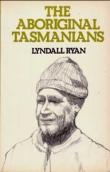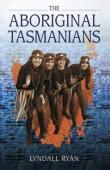AustLit
Latest Issues
AbstractHistoryArchive Description
'A comprehensive account of the survival of Aborigines in Tasmania and an examination of their interaction with white settlers.'
'The extinction of the Tasmanian Aborigines has long been viewed as one of the great tragedies resulting from the British occupation of Tasmania. This book demonstrates that the Aborigines in Tasmania, although dispossessed, did not die out then or at any other period in Tasmania's history. Some eight thousand descendants remain today.'
'In examining the myth created by nineteenth-century historians and scientists that Aborigines could not survive invasion, Lyndall Ryan investigages the nature of that invasion, Aboriginal resistance, and white Tasmanian policies towards the Aborigines after dispossession.'
'The Aboriginal Tasmanians then follows the emergence of a new Aboriginal community outside the boundaries of white society yet denied Aboriginal identity. In this new edition, Lyndall Ryan explores the fortunes of the present day community in their quest for landrights and social justice.'
'Tasmania was the cradle of race relations in Australia in the nineteenth century. It retains this position on the 1990s. In telling the story of the Aboriginal Tasmanians' struggles for a place in their own ountry, Lyndall Ryan provides special insights into the past and present of Aboriginal people nation-wide.' (Source: Publisher's website)
Publication Details of Only Known VersionEarliest 2 Known Versions of
Works about this Work
-
[Review Essay] The Aboriginal Tasmanians
1997
single work
essay
— Appears in: Australian Aboriginal Studies , no. 2 1997; (p. 60-62)'The first edition of The Aboriginal Tasmanians was published in 1981. This second edition contains an updated introduction which brings in current debates on Tasmanian archaeology and history, and concludes with two additional chapters focusing upon recent political movements and the impact of Mabo and Reconciliation. The original structure is retained, commencing with pre-European land use, then moving to the phases of European exploration and expansion, the guerrilla war, Robinson's conciliation, the establishment of the reserves on offshore islands, and finally the growth of Islander culture and Indigenous Tasmanian identity from the nineteenth century to the present.' (Introduction)
-
[Review Essay] The Aboriginal Tasmanians
1997
single work
essay
— Appears in: Australian Aboriginal Studies , no. 2 1997; (p. 60-62)'The first edition of The Aboriginal Tasmanians was published in 1981. This second edition contains an updated introduction which brings in current debates on Tasmanian archaeology and history, and concludes with two additional chapters focusing upon recent political movements and the impact of Mabo and Reconciliation. The original structure is retained, commencing with pre-European land use, then moving to the phases of European exploration and expansion, the guerrilla war, Robinson's conciliation, the establishment of the reserves on offshore islands, and finally the growth of Islander culture and Indigenous Tasmanian identity from the nineteenth century to the present.' (Introduction)





